Thermal Runaway
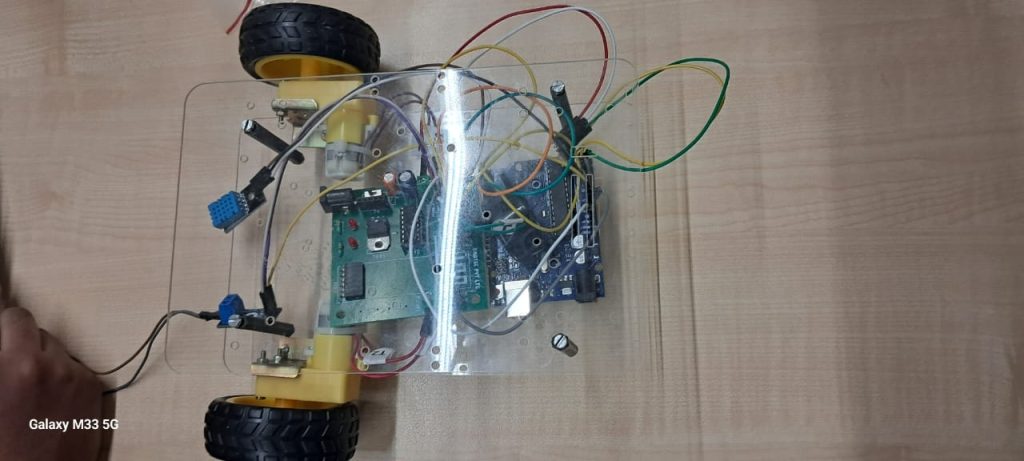
The Battery Safety Monitoring System is an AI-powered solution integrated into a car to detect thermal runaway in lithium-ion batteries. Using a chassis, wheels, motors, AMG8833 thermal camera, analog voltage sensor, cooling fan, and buzzer, it continuously monitors battery temperature and voltage in Pictoblox, providing early warnings, alerts, and automatic cooling activation to ensure safety and sustainability.
Fort Cleaner
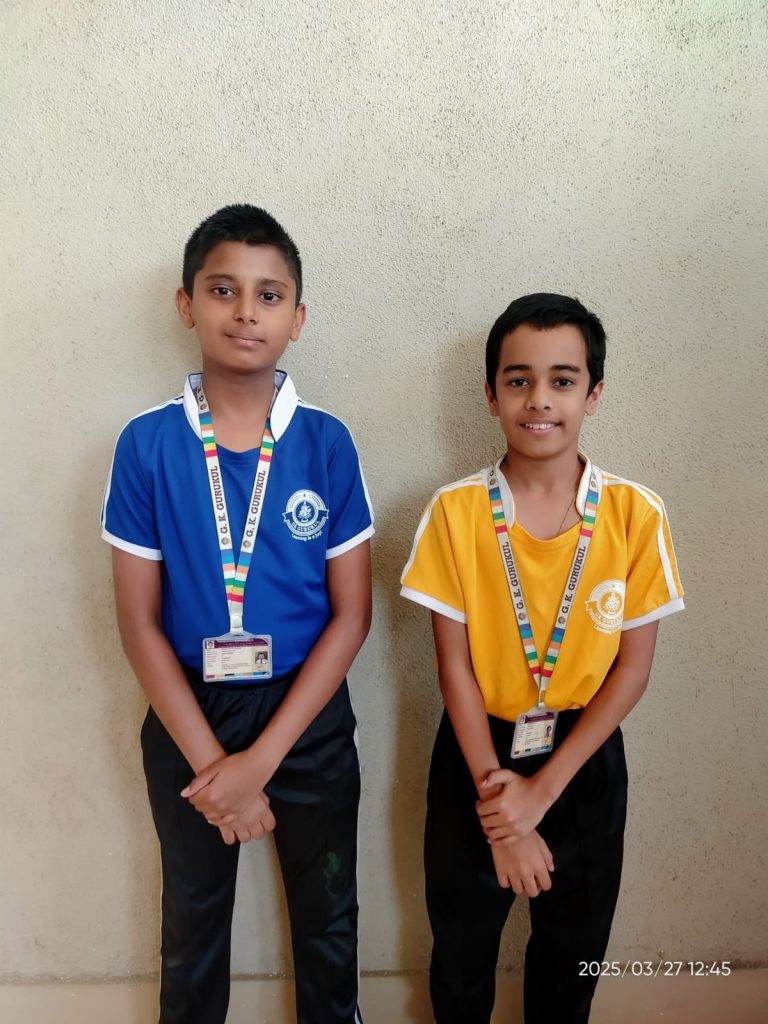
“Designed in Pictoblox, this smart garbage bot detects and collects waste using sensors and a robotic arm, minimizing human effort in hazardous areas. With tracks and motion control, it navigates rough terrains like slopes and rocky surfaces. Operating manually or autonomously, it ensures efficient waste management, preserving both the environment and the historical significance of heritage sites while maintaining cleanliness and sustainability.”
Automatic control system for sericulture farming
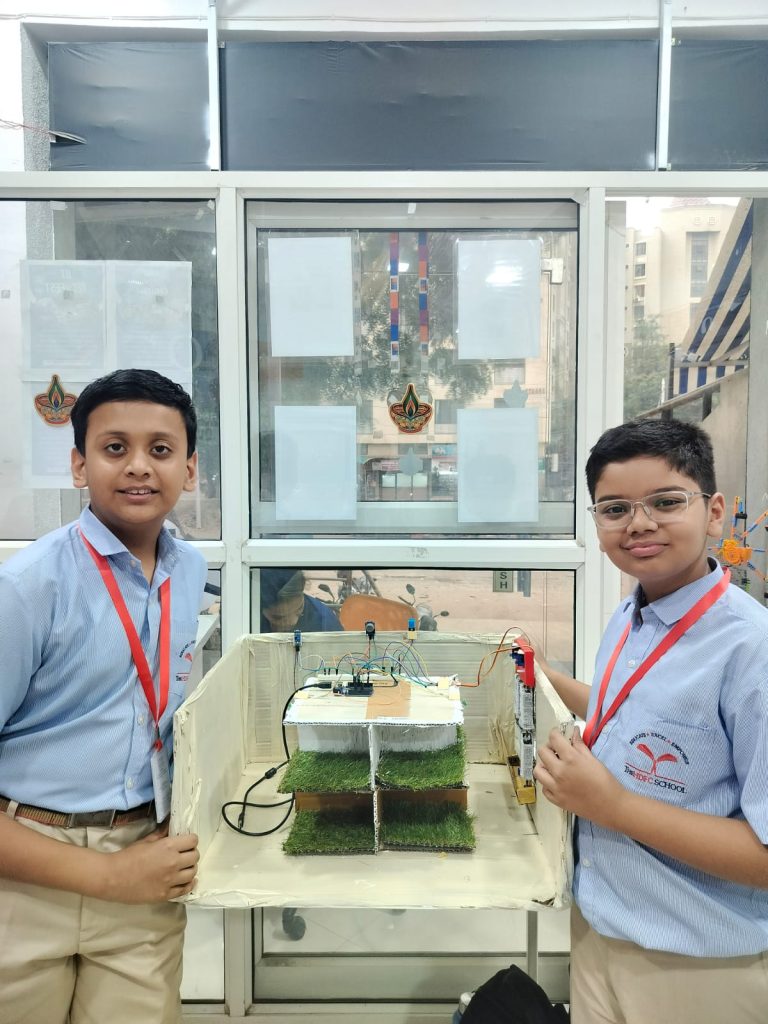
To enhance sericulture farming, the implementation of an Automated Environmental Control System (AECS) is proposed. This system will utilize advanced technologies to monitor and regulate key environmental parameters affecting silkworm health and productivity.
The solution includes the following components:
Real-Time Monitoring Sensors:
Temperature Sensors: Measure ambient temperature continuously.
Humidity Sensors: Track humidity levels to ensure optimal conditions.
Light Sensors: Adjust artificial lighting based on natural light conditions.
Carbon Absorbing Drone
To detect and reduce the carbon dioxide in the air, we propose building a carbon-absorbing drone.
This innovative solution will utilize advanced robotics to monitor and capture CO2 emissions in real-
time, significantly mitigating their impact on the environment. The drone’s precision and efficiency
will help create a healthier planet and a sustainable future.
Drones have become vital in multiple fields, including agriculture for crop monitoring, disaster
management for surveys and aid delivery, entertainment with aerial shows, surveillance for security,
and delivery services. Who can forget the spectacular drone show at Ayodhya during this Diwali!
Recognizing their importance, integrating carbon-absorbing technology into drones can help reduce
CO2 levels.
The project involves creating a network of small, autonomous drones designed specifically to
capture and sequester CO2 from the atmosphere. These drones would use a specialized CO2-
absorbing material (such as metal-organic frameworks or zeolite) to trap CO2. Once full, each drone
would return to a central base where the CO2 can be stored or processed.
Automatic Rice Stubble Collector
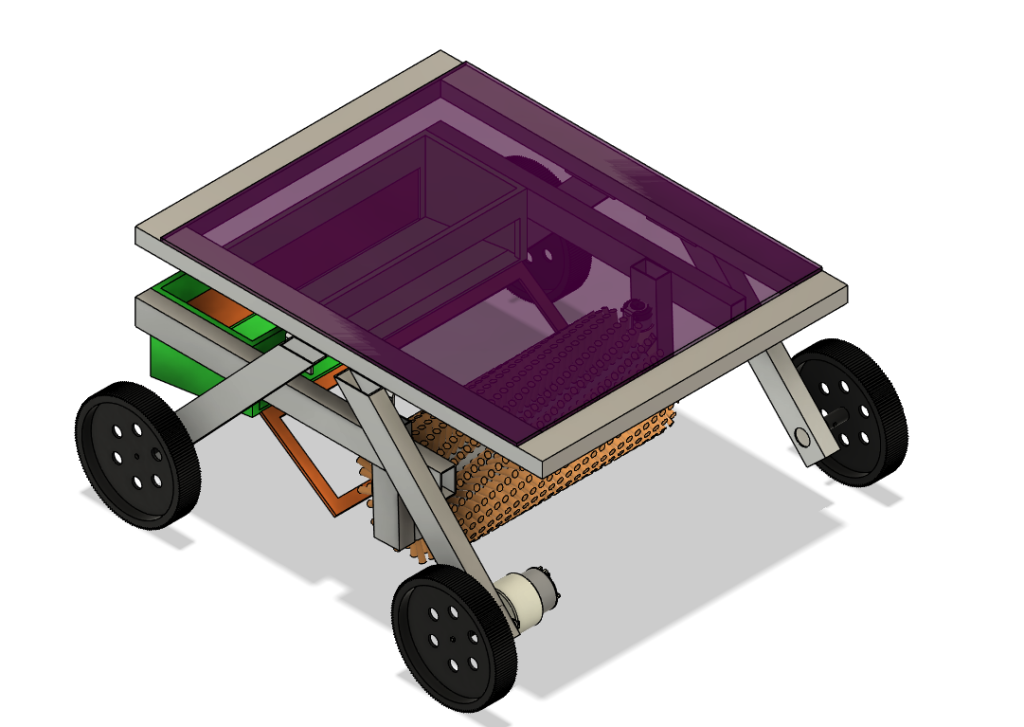
The Automatic Rice Stubble Collector is a device designed to help farmers efficiently gather rice stubble and place it in a designated corner for easy collection and sale to biofuel companies. This innovation aims to reduce manual labor and promote sustainable agricultural waste management.
مؤشر استهلاك الطاقة الكهربائية
يعمل المشروع كمؤشر للكمية استهلاك الطاقة في المنازل, حيث يقوم بإعلام الساكنين بمستوى استهلاكهم ( استهلاك ضعيف- متوسط- عالي – استهلاك عالي جدا) يقوم البرنامج بتحليل بيانات العداد الكهربائي للمنزل من خلال رمز QR الذي يحتوى على اليابانات اللازمة للبرنامج لتسهيل عملية ادخال البيانات و قرائتها من طرف نموذج تعلم الآلة.
قمنا باستخدام خاصية الذكاء الإصطناعي لتدريب البرنامج بواسطة بيانات خاصة بعدة منازل مع كمية استهلاكهم للطاقة.
Earth needs us
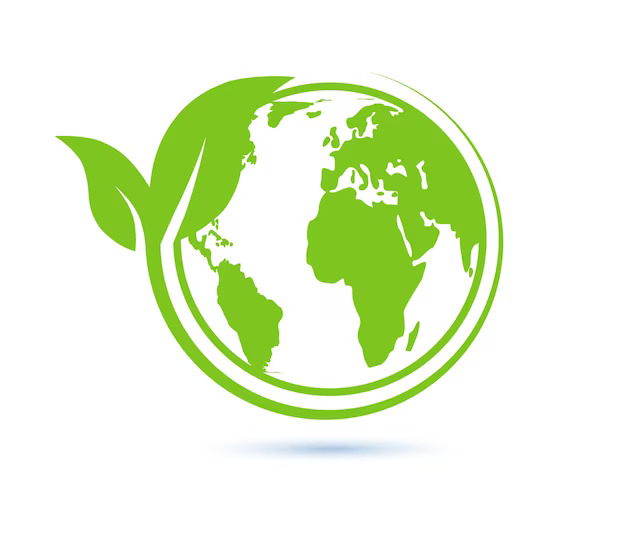
The project is an interactive learning game.
In 2 stages, the player will try to learn what are biodegradable materiel and recycling materiel.
The game goal is to show the player that there is always another solutions that make our earth better, responsibility is in our hand, and a little steps can change our view about the earth and climate.
Saving our earth starts with our actions.
ML Based Solution to Pollution
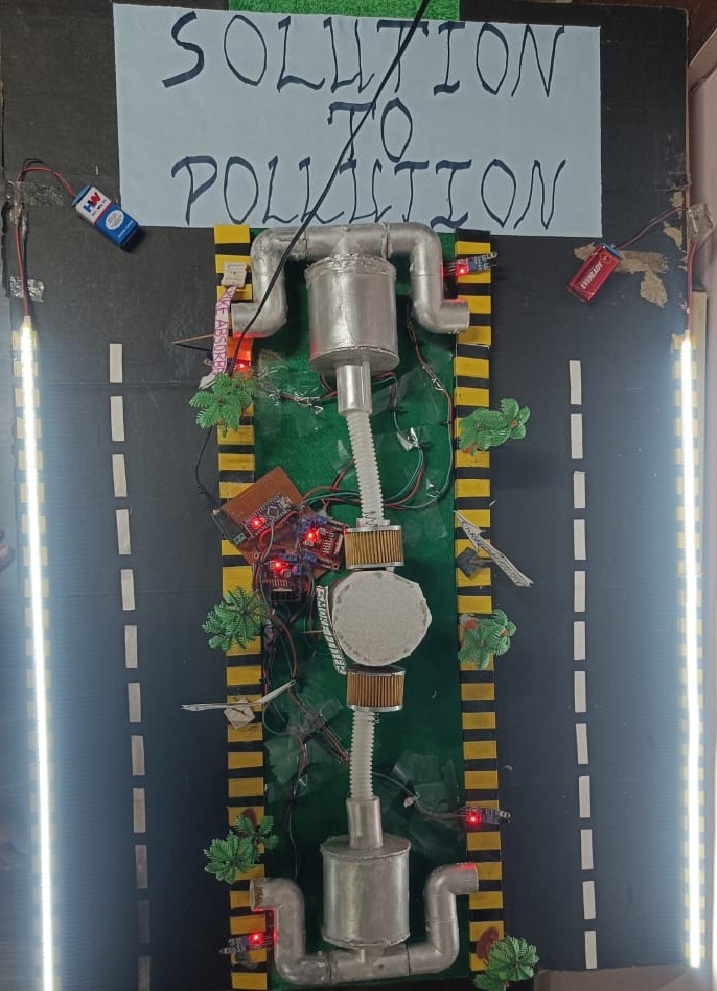
Vehicular emissions contribute significantly to air pollution, releasing harmful soot particles that degrade air quality and pose serious health risks. Traditional emission control systems lack real-time monitoring for clogged filters, leading to inefficient maintenance and increased pollution. Additionally, captured soot is typically discarded as waste, missing an opportunity for sustainable reuse. There is a need for an innovative solution that not only detects filter clogging in real time but also repurposes soot into a valuable product, reducing environmental impact and promoting circular economy practices.
Smart Agriculture
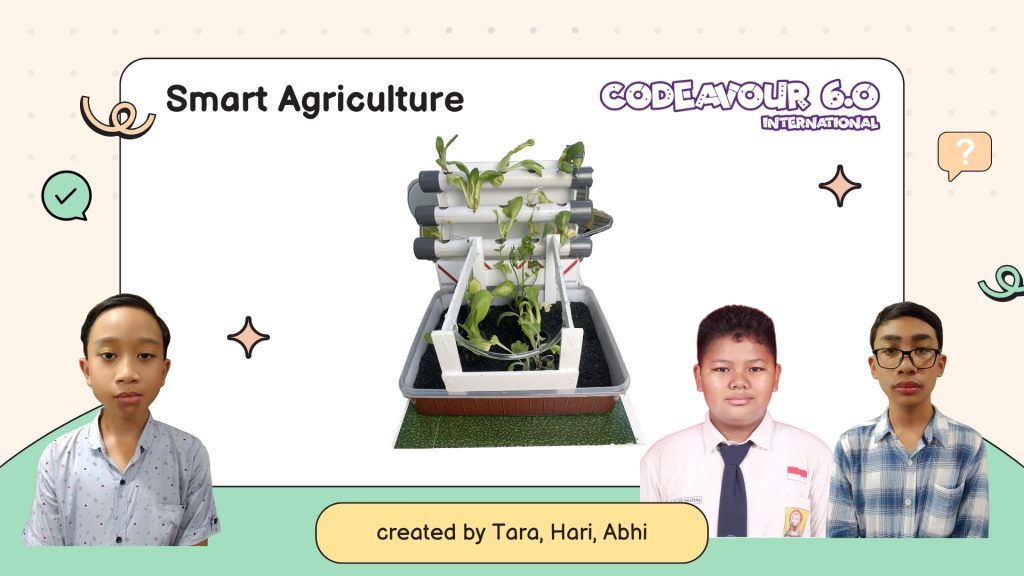
This project is a Smart Agriculture System designed to automate the irrigation process for plants, ensuring optimal water usage and reducing manual intervention. The system utilizes a soil moisture sensor to monitor the soil’s moisture level and controls two water pumps accordingly. The first pump is always active to water hydroponic plants, while the second pump operates automatically based on the sensor’s readings. If the soil moisture level drops below 50 (indicating dry soil), the second pump activates to irrigate the plants. Once the moisture level rises above 50 (indicating moist soil), the pump turns off. This ensures that plants receive the right amount of water at the right time, promoting healthy growth and conserving water.
The project is built using simple, everyday materials, making it accessible and easy to replicate for users. It is programmed in C++, which allows for efficient control and customization of the system. By automating the irrigation process, this system not only saves time and effort but also supports sustainable farming practices.
Aligned with the theme of Industry, Innovation, and Infrastructure, this project demonstrates how simple, affordable technology can be used to create innovative solutions for modern agriculture. It encourages the adoption of smart farming techniques, particularly in areas where resources are limited, and promotes the use of technology to enhance productivity and sustainability in agriculture. This project is a step toward making smart agriculture accessible to everyone, fostering innovation and infrastructure development in the agricultural sector.
Safe From Shock
Every year, earthquakes claim the lives of approximately 60,000 people, frequently as a result of inadequate preparation. Traditional drills are effective at training big groups, but they can come across as monotonous and uninteresting. Using PictoBlox and Arduino, we created an AI-powered earthquake simulator to improve earthquake education, producing a realistic and engaging learning environment.
AI is used in this simulator to identify player motions and make sure they react appropriately in the event of an earthquake. The experience is made more realistic and engaging by simulating earthquakes with a little model equipped with servo motors. Users must actively respond to the simulation, strengthening their comprehension through real-time testing and feedback, as opposed to passively learning safety protocols. Additionally, it enables customizable scenarios, which increases readiness for a range of earthquake intensities by adapting training to diverse environments and skill levels.
Even though it might not be as effective as conventional drills at training big groups of people at once, it provides more individualized learning and deeper engagement, guaranteeing that users actually retain replies that could save lives. This project creates a connection between technology and disaster preparedness by fusing physical seismic effects with AI-driven interactivity, offering a creative and useful teaching tool. Through interactive learning and training experiences that are adaptable for all age groups, this simulator can greatly increase earthquake preparation when used in conjunction with traditional exercises, potentially saving more lives.
